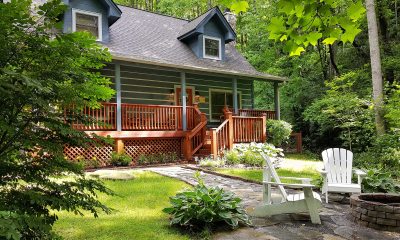
The reactive maintenance approach, or “If it ain’t broke, don’t fix it,” is expensive and inefficient. Vacation rental property managers wind up spending more time and energy repairing items than they do inspecting and maintaining them. Some managers are even forced to shut down properties mid-season due to heating, ventilation, and air conditioning (HVAC) system malfunctions, losing thousands of dollars in rental revenue.
Vacation rental managers who invest in maintenance programs can reap huge dividends down the road and save their owners significant operating costs. Simple tasks like cleaning condenser coils and gaskets in a refrigerator help appliances run efficiently and extend their lives. In fact, studies have shown that preventive maintenance can reduce repair costs by 20 percent. But cost savings aren’t the only benefits here. Properties that function as advertised result in happy renters and owners, leading to repeat business and a trusted brand.
Still aren’t convinced? Let’s look at an example: On average, heating and cooling accounts for 54 percent of a residential structure’s annual energy cost (about $1,200). A well-maintained HVAC system can increase cost-efficiency by 30–50 percent, saving $360–$500 per year.
Define Your Maintenance Plan
The first step in creating an effective preventive maintenance plan is to define your goals. Ask yourself the right questions: Is your primary goal to reduce the risk of emergency repairs or to save money on recurring costs? What are the most important aspects of your property?
These parameters might depend on your geographic region. For example, homes in colder climates often sit unoccupied through winter months and will need to be winterized. On the other hand, coastal homes will need thorough exterior cleaning to remove corrosive sea salt from fixtures and amenities. This includes exterior light fixtures, power outlets, furniture, and grills.
HVAC filters are very important in most plans. The frequency with which you need to replace your filters will depend on numerous factors like filter type, air quality, pets, and occupancy rates. But regardless of your environment, every maintenance plan should include electric appliances.
Smoke and carbon monoxide detectors should be cleaned and have their batteries replaced every six months. Detectors can randomly fail, so it’s a good policy to replace detectors every ten years. Replacing light bulbs and inspecting fixtures for loose sockets or damage are also a must. Modems and routers should be cleaned and reset monthly, and batteries in wall clocks, alarm clocks, TVs, and remotes should be changed yearly.
Set Standard Operating Procedures (SOPs)
The standard operating procedures you create will keep your team organized. These guidelines will dictate how and when each item on your list is maintained. Meet with maintenance techs and discuss these requirements as well as the maintenance frequency (e.g., weekly, monthly, quarterly) and the estimated amount of maintenance time for each item.
Lastly, make a list of the supplies, parts, and tools needed to complete your program. This list will allow you to order parts in advance and save money with bulk discounts.
Understand Your Inventory
The next step in setting up a preventive maintenance program is compiling deep property data. Begin by recording the make, model, serial numbers, and condition of all electronics, appliances, and equipment within your properties as well as your office and work spaces. (This includes relevant information on company vehicles, such as oil change dates, tire replacements, battery replacements, and repairs.) Consider organizing your HVAC appliances and equipment in different zones and include where each zone is located. Be sure to record special notes on any unique items that include several parts, as these may require extra effort to maintain. A comprehensive list of these items will be invaluable to your company and to your homeowners.
Know Your Staffing Requirements
This is key to executing your preventive maintenance program. If your program is running properly, then your maintenance staff should be spending only 25 percent of its time on reactive maintenance. Instill a proactive mind-set in your staff.
Some companies find it useful to hire third-party vendors to meet their preventive maintenance needs. Outsourcing things like HVAC care and pest control can give you the expertise you need while saving you the time and money it would cost to train your staff. Having a list of vendors and contractors on call is a must, giving you peace of mind when issues arise.
Train the Team
Every member of your staff should be familiar with the SOPs for each maintenance item. If necessary, train staff on maintenance procedures prior to starting your program. The most important component of this training is data capture, as accurate reporting is necessary for owner billing, inventory control, and future process improvement. Thorough notes should include tasks completed, time spent on each task, location, room, item maintained, and parts used.
Schedule Your Plan
First, use the data from your inventory to establish your maintenance priorities. Doing so will help avoid overloading staff with busywork and will ensure that the important items are taken care of first. The highest-priority items are traditionally those involving safety or those that cost more money and time to maintain.
Next, establish what items are maintained at certain times of the year and define your maintenance windows (e.g., your off-season for annual/semiannual maintenance and the time between checkout and arrival for weekly maintenance). Only then should you schedule your priority items, as well as maintenance for your company vehicles—knowing your degree of access to certain vehicles can help prevent logistical delays.
Your lower-priority items can fill the gaps in your schedule. Be mindful about giving your maintenance techs lower-priority items in locations near their important tasks; this will reduce unnecessary travel time.
Analyze, Adjust, and Improve
Ditch the “set it and forget it” mind-set and look to improve your plan every step of the way. It takes time to develop a rock-solid program, so don’t hesitate to consult your maintenance staff on what’s working and what’s not. You can use the feedback you get to adjust your maintenance scheduling. Make note of the properties that are costing the most time and attention, and consider describing to the owners of these properties the upgrades and renovations that must be completed for their homes to remain in your rental program.
Get Homeowners on Board
Developing a preventive maintenance program works best when your homeowners participate. The best way to do this is to fully communicate the work that’s being done and what is necessary to maintain the property. Provide a full list of all services included in the program and explain why these services are cost-effective. Timing is everything—promote the program when it’s time to renew your agreement or when you’re taking on new clients. This transparent communication increases confidence in your property management services and improves owner relations.
In a competitive vacation rental market where managers are expected to provide service to their guests and owners, the efficiency gains of a preventive maintenance program are necessary to keep up with the workload—particularly in high season, when staff is stretched thin and there isn’t an hour to waste on a Saturday.












RSS